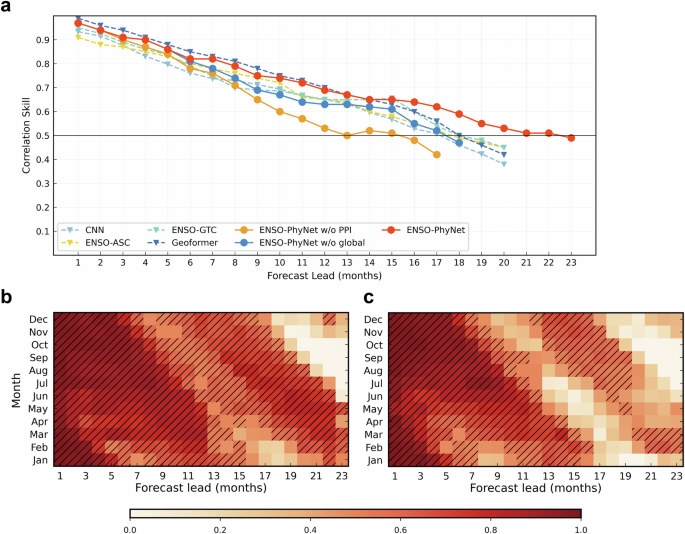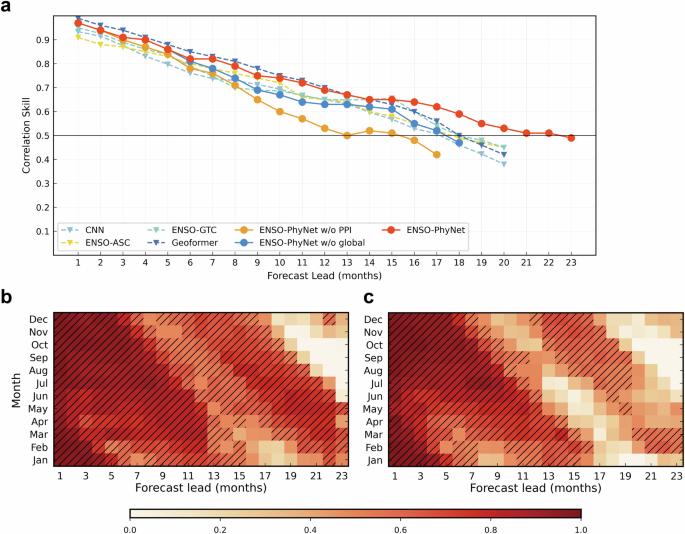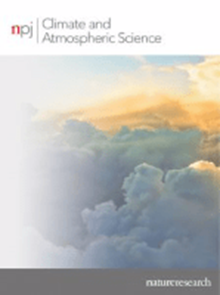将热量收支动态纳入基于变压器的深度学习模型,以熟练预测厄尔尼诺/南方涛动
IF 8.5
1区 地球科学
Q1 METEOROLOGY & ATMOSPHERIC SCIENCES
引用次数: 0
摘要
虽然深度学习模型在厄尔尼诺/南方涛动预测中表现出了良好的能力,但其固有的黑箱性质往往导致缺乏物理一致性和可解释性。在此,我们介绍一种基于 Transformer 的厄尔尼诺/南方涛动预测模型 ENSO-PhyNet,该模型通过自我关注计算纳入了热预算动态过程。该模型可预测赤道太平洋的海面温度(SST),并能在长达 22 个月的时间内准确预测 3.4 级厄尔尼诺指数。自我关注图揭示了该模式如何通过关注某些区域的特定过程来进行预测。对近期厄尔尼诺和拉尼娜事件的案例分析强调了热层反馈和地带平流反馈对 2015 年事件变暖的影响,以及异常东风对 2021 年第二年拉尼娜出现的关键作用。这些发现证明了该模式的可解释性及其识别与厄尔尼诺/南方涛动事件发展相一致的物理信号的能力。本文章由计算机程序翻译,如有差异,请以英文原文为准。


Incorporating heat budget dynamics in a Transformer-based deep learning model for skillful ENSO prediction
While deep learning models have shown promising capabilities in ENSO prediction, their inherent black-box nature often leads to a lack of physical consistency and interpretability. Here, we introduce ENSO-PhyNet, a Transformer-based model for ENSO prediction, which incorporates heat budget dynamical processes through self-attention computations. The model predicts sea surface temperature (SST) in the equatorial Pacific and achieves skillful predictions of the Niño 3.4 index with a lead time of up to 22 months. The self-attention maps reveal how the model makes predictions by focusing on specific processes in certain regions. Case analyses of recent El Niño and La Niña events underscore the impact of thermocline feedback and zonal advection feedback on the warming of the 2015 event, as well as the crucial role of anomalous easterlies in the emergence of the second-year La Niña in 2021. These findings demonstrate the model’s interpretability and its ability to identify signals that are physically consistent with the development of ENSO events.
求助全文
通过发布文献求助,成功后即可免费获取论文全文。
去求助
来源期刊

npj Climate and Atmospheric Science
Earth and Planetary Sciences-Atmospheric Science
CiteScore
8.80
自引率
3.30%
发文量
87
审稿时长
21 weeks
期刊介绍:
npj Climate and Atmospheric Science is an open-access journal encompassing the relevant physical, chemical, and biological aspects of atmospheric and climate science. The journal places particular emphasis on regional studies that unveil new insights into specific localities, including examinations of local atmospheric composition, such as aerosols.
The range of topics covered by the journal includes climate dynamics, climate variability, weather and climate prediction, climate change, ocean dynamics, weather extremes, air pollution, atmospheric chemistry (including aerosols), the hydrological cycle, and atmosphere–ocean and atmosphere–land interactions. The journal welcomes studies employing a diverse array of methods, including numerical and statistical modeling, the development and application of in situ observational techniques, remote sensing, and the development or evaluation of new reanalyses.
 求助内容:
求助内容: 应助结果提醒方式:
应助结果提醒方式:


